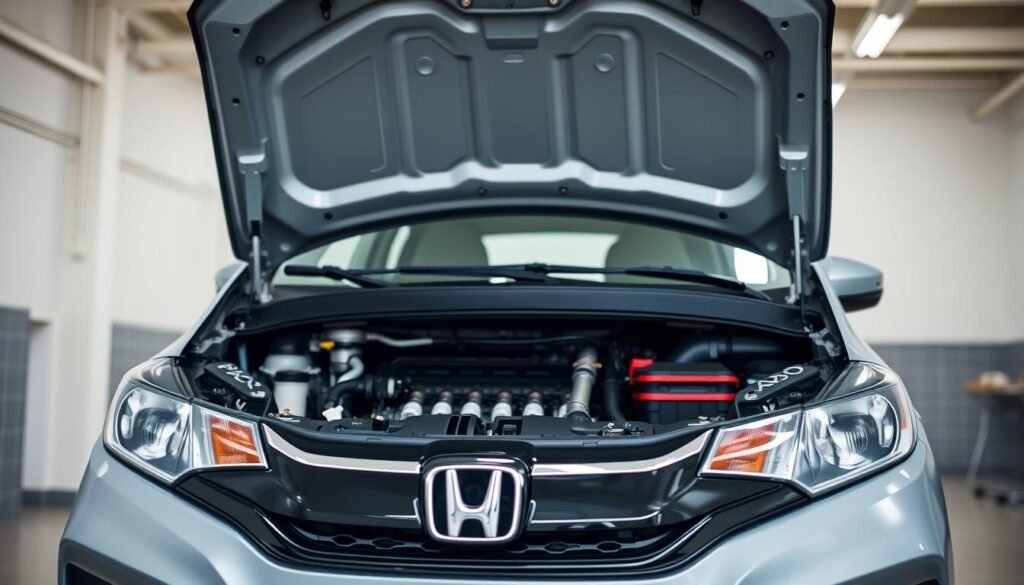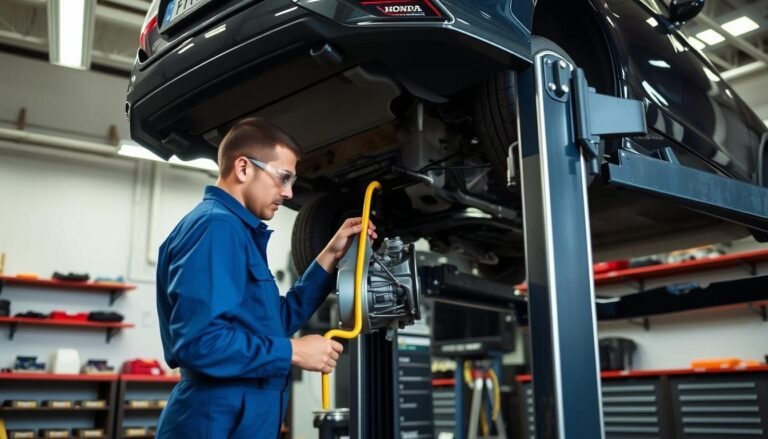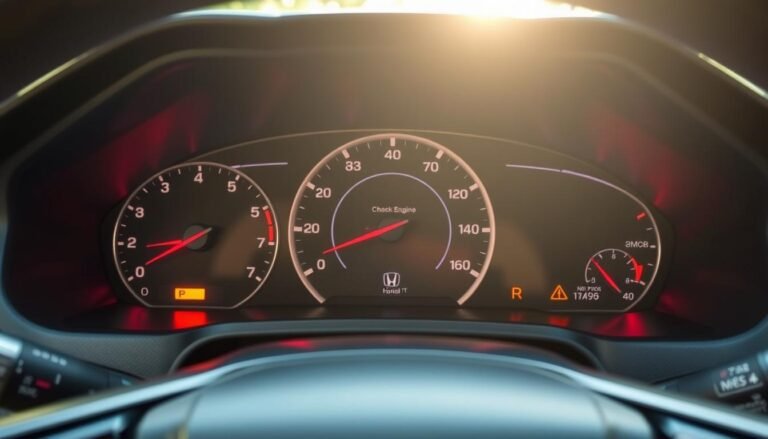Honda Fit Maintenance Schedule Guide & Tips
The Honda Fit maintenance schedule is key to your car’s health and long life. Keeping up with regular maintenance means your Honda Fit stays in good shape, saving you from unexpected issues and ensuring it lasts longer.
This guide covers the Honda Fit’s service times and how to keep it running well. It’s important for all Honda Fit owners to know what’s on the maintenance checklist.
Sticking to this schedule boosts your car’s performance and helps you avoid big repair bills.
Things like checking fluids, changing oil, and inspecting brakes and tires are part of regular checks. These steps help prevent bigger problems later.
This detailed guide will show you how to keep your Honda Fit at its best. Learn everything about the Honda Fit maintenance schedule, so you can take good care of your car.
What is The Importance of Regular Maintenance?
Regular maintenance is key to keeping your Honda Fit running well. By following a honda fit regular maintenance schedule, you can find and fix small problems early.
This keeps you safe on the road and helps your wallet by improving gas mileage. A good honda fit maintenance plan matches the maker’s advice.
It keeps your car in top shape and preserves its warranty. Plus, it boosts your car’s value if you decide to sell it.
Regular maintenance means safer driving, less spent on gas, and a more valuable car. Seeing its value helps you keep a reliable and efficient car over the years.
The Honda Fit Maintenance Schedule
Following the Honda Fit service schedule is key for your car’s performance and long life. It lists when to do maintenance tasks, keeping your car in great shape.
By doing regular upkeep like oil changes, you’ll face fewer breakdowns and have a better drive.
Overview of Recommended Service Intervals
The schedule marks when to service your Honda Fit based on miles driven. Here’s a quick look at important service times:
| Mileage Interval | Service Recommended |
|---|---|
| 5,000 miles | Oil Change and Filter Replacement |
| 15,000 miles | Air Filter and Cabin Filter Replacement |
| 30,000 miles | Fluid Checks: Brake, Transmission, Coolant |
| 60,000 miles | Timing Belt Inspection |
| 100,000 miles | Comprehensive Inspection and Major Service |
General Maintenance Timeline
For a reliable Honda Fit, stick to this general upkeep timeline. It’ll keep your vehicle dependable:
- Inspect tire condition and pressure monthly.
- Check engine oil level before every long trip.
- Examine headlights and taillights regularly.
- Rotate tires every 5,000 to 7,500 miles for even wear.
- Replace wiper blades annually.
Key Elements of The Honda Fit Maintenance Schedule
Keeping your Honda Fit running well means checking key fluids regularly. Following the honda fit maintenance schedule keeps your car in top shape.
It’s important to keep an eye on engine oil, coolant, brake fluid, and automatic transmission fluid.
Engine Oil and Coolant Level Checks
Engine oil is crucial for your Honda Fit’s engine. You should change the oil every 6,000 miles or as the car’s indicators suggest.
Always check the coolant to prevent your car from overheating, avoiding expensive fixes.
Brake Fluid and Automatic Transmission Fluid Maintenance
Brake fluid ensures your car can stop safely. Remember to check and change it as needed for good braking.
Check the automatic transmission fluid as the honda fit maintenance schedule says, to keep gear shifts smooth and the transmission working well.
Honda Fit Recommended Maintenance Services
Keeping your Honda Fit in good shape means paying attention to it regularly. You should always stay on top of regular maintenance. This helps your car perform better and keeps you safe on the road.
Routine Checks For Tire Inflation and Condition
Your Honda Fit’s tires are key for its performance and your safety. Checking the tires’ inflation and condition every month is vital.
Getting this right means better fuel use and smoother driving. Remember:
- Check tire pressure regularly according to the manufacturer’s specifications.
- Examine the tread depth to ensure sufficient grip on the road.
- Rotate your tires every 6,000 miles (approximately 9,700 km) for even wear.
Fluid Level Inspections at Fuel Stops
Checking fluid levels during fuel stops helps your Honda Fit stay in great shape. It’s important to regularly check:
- Engine oil to prevent engine damage.
- Coolant for optimal engine temperature management.
- Brake fluid for safe stopping power.
- Transmission fluid to ensure smooth shifting.
Using a maintenance checklist for your honda fit helps you remember all these important tasks. By doing so, you can make sure your car stays running well for a long time.

Honda Fit Service Intervals: Mileage-Based Guidelines
Knowing when to service your Honda Fit is key for its care and peak performance. Following the suggested service times can make your car last longer.
There are certain miles when it’s important to check and possibly fix parts. This part will tell you when these times are, especially around 100,000 km.
Important Milestones: 24,000 km & Beyond
At 24,000 km, changing the air cleaner element and the dust and pollen filter is a must. If you drive a lot in dusty places or cities, these parts get dirty.
This dirt can hurt how well your engine works and the air quality inside your car. Changing these filters regularly keeps both your car and its riders in a clean space.
Additional Services at 100,000 km
When you hit 100,000 km, it’s time for a close look at many car care areas. Things to do likely include:
- Inspection and potential replacement of the timing belt
- Fluid flushes for the transmission and cooling system
- Brake system inspection and service as needed
- Battery and electrical system evaluation
Following the Honda Fit service plan keeps your car going strong. Taking good notes on what services you’ve done helps.
Also, look at your owner’s manual for anything else your specific model might need.
How To Maintain Your Honda Fit Effectively?
To keep your Honda Fit in top shape, you need to know how different driving conditions affect it.
For example, driving in dusty places or busy city streets requires you to adjust how you take care of your car.
Following a maintenance plan is key to making your car last longer and run more reliably.
Tips For Driving in Dusty Conditions
Driving where it’s dusty means you need to change your engine and cabin air filters more often. Not doing so can hurt your engine’s performance and put more stress on your car.
To deal with dust, you should:
- Inspect air filters every month for dust accumulation.
- Replace filters as necessary to maintain optimal airflow.
- Keep windows closed to minimize dust entering the cabin.
Urban Driving: Managing Emissions and Filters
City driving brings its own set of challenges, especially with emissions and keeping filters clean.
Taking good care of your Honda Fit can help you manage these challenges better:
- Monitor the condition of the exhaust and emissions systems.
- Check and replace air filters periodically to combat urban pollutants.
- Schedule regular check-ups focusing on emission controls.

Compromise these driving conditions and following these care tips will help keep your Honda Fit running smoothly. It’s all about proper maintenance for lasting performance.
Honda Fit Maintenance Checklist
It’s important to keep your Honda Fit in top shape for best performance and long life. A detailed maintenance checklist helps you know what to check regularly.
Follow it closely to avoid any problems and keep your car running great.
Components To Inspect Monthly
Monthly checks help your Honda Fit work well. Focus on these things:
- Tire pressures: Make sure they’re right for safety and to save on gas.
- Fluid levels: Look at engine oil, coolant, and transmission fluid.
- Brake functionality: Test the brakes to make sure they work quickly.
- Lights: Check all outside lights work, including headlights, tail lights, and signals.
This maintenance list helps you catch issues early, saving you money later.
Yearly Maintenance Tasks To Keep in Mind
There are also yearly checks to help keep your Honda Fit in good condition:
- Change engine oil and filter for better engine work.
- Look at the brakes closely, including pads, rotors, and fluid.
- Check belts and hoses for wear or cracks and replace if needed.
- Check the battery terminals for corrosion and clean if necessary.
- Change the coolant to avoid overheating.
Adding these yearly tasks to your maintenance routine keeps your car reliable and performing well.
Significance of Following The Honda Fit Maintenance Plan
Keeping your Honda Fit well-maintained is key to keeping its value and performance up.
A good maintenance plan ensures your car works well and lessens the chance of sudden breakdowns. It also saves you money on repairs and extends your car’s life.
Preventative Measures For Longevity
Regular maintenance checks help avoid big problems. Checking things like the engine, brakes, and fluids keeps your car running smoothly.
Here are some important maintenance tasks:
- Regular oil changes to maintain engine health.
- Monitoring and replacing filters to improve air quality and performance.
- Checking tire pressure and tread depth to ensure safe driving.
- Inspecting belts and hoses for signs of wear.
Cost Considerations of Regular Maintenance
Regular maintenance is a smart financial decision in the long run. Skipping routine checks can lead to expensive repairs.
Here are some key costs to think about:
| Scenario | Estimated Cost | Preventative Action |
|---|---|---|
| Oil Change Every 5,000 Miles | $50 | Regular oil changes |
| Brake Replace | $300 | Inspect brakes every 10,000 miles |
| Transmission Repair | $1,500 | Change transmission fluid as recommended |

Benefits of A Well-Planned Maintenance Schedule
A well-planned maintenance schedule is key to getting the best out of your Honda Fit. It makes sure your car uses gas efficiently.
By following the Honda Fit maintenance schedule, you take care of important parts of your car. This improves how well it works.
Enhancing Performance and Fuel Efficiency
Sticking to the recommended maintenance for your Honda Fit keeps your engine running smoothly.
Changing oil on time, replacing air filters, and checking tire pressures help your car use less gas. This means your engine works better, and driving becomes more fun.
Extending The Life of Your Vehicle
Regular maintenance keeps every part of your Honda Fit working right. Checking your car regularly helps avoid big problems and expensive fixes later.
By keeping up with the Honda Fit maintenance schedule, your car lasts longer. This saves you money and keeps your car running for years.
Common Issues Without Regular Maintenance
Keeping up with your Honda Fit’s honda fit maintenance schedule is essential. If you skip regular care, you might face issues.
These can grow into big problems or even safety dangers. Knowing the risks of not maintaining your car ensures it stays in good shape.
Potential Risks of Ignoring Maintenance Needs
Not doing regular checks can cause big problems, like:
- Engine failure due to infrequent oil changes.
- Brake issues from worn pads and low brake fluid levels.
- Transmission complications arising from neglected fluid changes.
- Reduced fuel efficiency that impacts overall performance.
Repair Costs Associated with Lack of Upkeep
Ignoring your Honda Fit’s service needs can be costly. Repairs due to skipped maintenance are usually more expensive than routine checks.
Here are some costs you might face:
- Engine rebuilds can cost thousands of dollars compared to regular oil changes.
- Brake system repairs may run into the high hundreds or even thousands.
- Transmission replacements are among the costliest repairs, often exceeding several thousand dollars.

Helpful Tips For DIY Maintenance
Doing your own Honda Fit maintenance is easy with the right tools. It not only saves money but gives you control over your car’s care. Here are essential tools and times you might need a pro’s help.
Essential Tools For an Effective Maintenance Routine
To keep your Honda Fit in top shape, a good toolkit is key. Consider adding these important tools:
- Basic hand tools: wrenches, screwdrivers, and pliers for minor repairs.
- Tire pressure gauge: ensures that your tires are properly inflated.
- Fluid funnel: simplifies the process of adding fluids like oil and coolant.
- Oil filter wrench: makes changing the oil filter easier.
- Jack and jack stands: for safely lifting your vehicle.
Organize your tools for easier maintenance. Use a Honda Fit maintenance checklist to cover all areas.
When To Seek Professional Help?
Some maintenance tasks need a pro. Get help if you notice:
- Unusual engine noises or vibrations that could indicate serious issues.
- Warning lights that stay illuminated after troubleshooting.
- Difficulties in performing routine tasks, such as changing the oil or filters.
- Complex repairs that might require specialized tools or training.
Asking for professional help can prevent expensive repairs. Keeping up with maintenance ensures a long-lasting Honda Fit.
| Tool | Purpose |
|---|---|
| Wrenches | Used for tightening or loosening bolts. |
| Tire Pressure Gauge | Ensures tires are at the correct air pressure. |
| Fluid Funnel | Makes it easy to add fluids without spills. |
| Oil Filter Wrench | Simplifies oil filter removal during changes. |
| Jack and Jack Stands | Provides safe vehicle lifting for undercar maintenance. |
Conclusion
It’s key to stick to the Honda Fit’s maintenance schedule. Paying careful attention to your car’s needs boosts its performance. It also keeps its value high.
Using this guide’s tips, like service times and checks, makes driving better. Trying to prevent problems helps avoid high repair costs. Watching fluids, brakes, and the engine keeps your car going strong.
Keeping up with maintenance means your Honda Fit will be dependable for a long time. Be smart and proactive. You’ll enjoy driving your car more, every single day.
FAQs
Q: What is the recommended maintenance schedule for the Honda Fit?
A: The Honda Fit needs regular oil changes every 6,000 miles. You should also check coolant levels, and change the air and cabin filters every 24,000 km. Doing this helps your car run smoothly and reliably.
Q: How often should I check tire pressure on my Honda Fit?
A: Check your Honda Fit’s tire pressure once a month. This helps with fuel efficiency and improves the car’s handling.
Q: What services should I consider if I frequently drive in dusty conditions?
A: If you drive a lot in dusty areas, change both the engine air filter and the cabin air filter more often. Clean filters boost your car’s performance and keep the air inside clean.
Q: What happens if I ignore the Honda Fit maintenance schedule?
A: Ignoring the Honda Fit’s maintenance can cause big problems like engine and brake failures, and transmission issues. Cars that don’t get regular checks often need more expensive repairs later.
Q: How can I enhance the resale value of my Honda Fit?
A: Keeping up with regular maintenance can help your Honda Fit run better and raise its resale value. Following the maintenance guide can make it more attractive to buyers.
Q: What tools do I need for DIY maintenance on my Honda Fit?
A: To take care of your Honda Fit yourself, you’ll need some basic tools. A tire pressure gauge and a fluid funnel are also handy. These tools make doing your own maintenance easier.
Q: Why are fluid level inspections important for my Honda Fit?
A: Checking fluid levels often is key. It can stop overheating, poor performance, and engine damage. Check fluids every time you get gas to keep your car running well.
Q: What are the critical components to inspect monthly for my Honda Fit?
A: Each month, check your tire pressure, fluid levels, brakes, and all lights. Regular checks can help you find problems early. This can save you from bigger repairs later.







